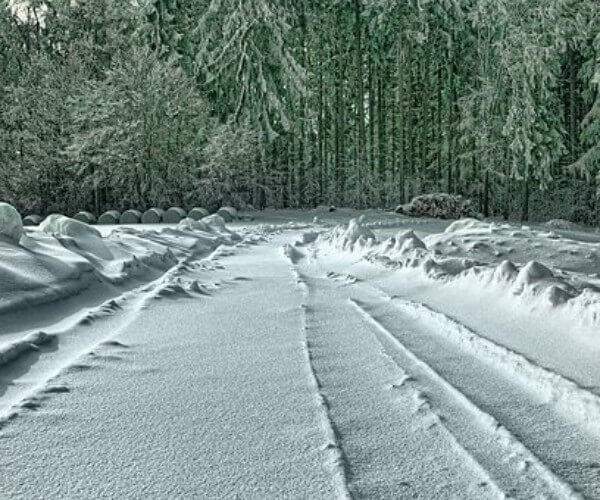- Turf
- Artificial
- Soil
- Timber
- Composite Decking
- Paving & Stone
Get In Touch With Our Experts Today!
Give us a Call! - Seed & Fertiliser
- Dressing
- Bark

March 09, 2018
If you live in the UK, chances are you will have been battered by some adverse weather recently – blizzards, rain, gale-force winds – you name it, it’s been around the last few days. Not only was the transport network thrown into chaos, your garden and lawn may be feelings the effects too. The recent poor weather has likely meant that you also haven’t been able to lay any new turf. So now that the snow has mostly melted and the winds have calmed (somewhat), how can you get your lawn ship shape and your spring maintenance back on track?
Draining excessive rainfall
It may sound silly – after all, watering is an important part of lawncare – but heavy or excessive rainfall, such as that experienced by the Home Counties over the last few days, can have a really damaging effect on your lawn. One way of initially protecting your lawn against flooding issues or heavy rainfall is ensuring that you have a good level of drainage to start with. However, if you have ended up with a slightly soggy lawn or a serious flooding issue, all is not lost. The first key step to note is staying off your lawn until it appears to be dried out and doesn’t look as if it will pool with water when stepped on. The soil and drainage pattern will affect how long this takes, but it shouldn’t be more than a few days. However, if you are finding that this process is taking a long time, you can always encourage better drainage by using a garden fork and creating some holes. Once your grass is drier, you can rake any leaves or debris from the lawn so that any damage can be properly assessed.
Snow related issues
Snow itself isn’t too much of a problem, but the after effects can be very damaging. Dense areas of snow on your lawn can result in ‘snow mould’, a kind of fusarium disease, which occurs once the snow has melted. This means it’s important to keep an eye on where you’re building snowmen (better on the pathway than on your lawn!) or where you are piling snow that has been cleared. You can treat ‘snow mould’ or any other fusarium diseases you come across.
Repairing any gaps
For any areas of your lawn that are looking sparse following the poor weather conditions, it is a good idea to think about overseeding, or re-sowing any particularly bad areas. If you are repairing any bare patches, it’s best to treat these as if they are brand new areas of lawn. It’s important to ensure that seeds are not left on top of the soil, but are carefully raked through in order to help promote establishment and growth. It’s advisable to avoid walking on a newly seeded lawn for a few weeks whilst it goes through this process. If you do have particularly large areas of your lawn that are damaged, it might be best to consider fully relaying turf in these patches. This will take some preparation and work to blend it sympathetically with the existing lawn, although less effort than seeding in terms of trying to get it to grow and have the same look as established turf.
Time to mow?
Strange as it may seem, in order to get going with your spring lawncare routine, and to promote strong, healthy growth from your damaged lawn, it may be time to think about mowing. It will stimulate good growth, helping to repair your lawn and start a strong spring maintenance regime. Remember to never remove more than a third of the height of the grass when mowing.
Bad weather conditions and stormy climes are not the end of things for your lawn. Whilst it will take some extra work to get back on track, it will be completely worth it come summertime when you can really appreciate your well-kept garden.